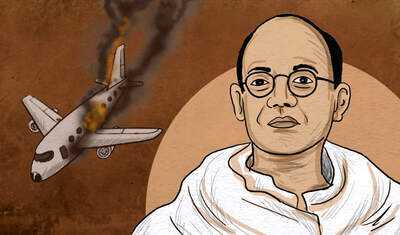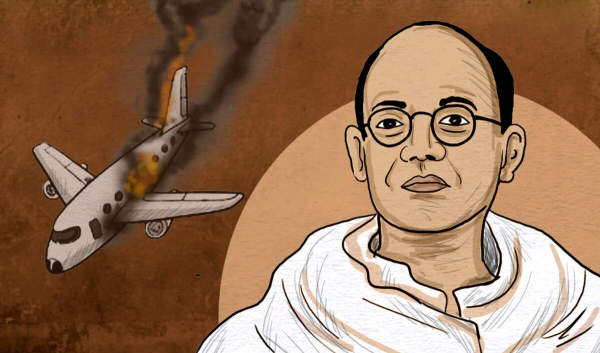
 The Mystery of Death
The Mystery of Death
Death is an inevitable truth, yet some deaths are shrouded in mystery. The enigma surrounding Netaji Subhas Chandra Bose's demise remains one of the longest-standing controversies in Indian politics. For decades, people in India have been eager to uncover what truly happened to Bose. Was he killed in a plane crash, did he meet his end in Russia, or did he live incognito in Uttar Pradesh until 1985? On August 16, 1945, as World War II was nearing its conclusion, Japan surrendered, and Hitler had taken his own life in Germany. Both Germany and Japan faced severe defeat in the war. Netaji, who had been leading the Azad Hind Fauj since 1943, was seeking new strategies to continue the fight for independence. Although his plans were not explicitly documented, his associates were aware that he intended to relocate his base to the Soviet Union.
Netaji aimed to express gratitude to the Japanese government in Tokyo before heading towards the Soviet Union. The rationale behind this was straightforward: the Soviet Union was part of the Allied Forces, the nations that emerged victorious in the war. However, the Soviets were quite different from countries like the USA and Britain due to their communist ideology, which led Netaji to believe they would support India's cause against the British. According to the Shah Nawaz Committee report, during this period, he made his third and final visit to Tokyo to discuss critical issues with the Japanese government. However, Japan had just lost the war, and the devastation caused by the atomic bombings of Hiroshima and Nagasaki limited their options for facilitating his travel.
On August 17, two aircraft landed at the deserted Saigon airstrip. The first carried Bose, along with Ayyar, Pritam, Rahman, and another Japanese officer. The second plane included Hachiya, Isoda, Colonel Gulzar Singh, Debnath Das, and Major Abid Hasan. Upon arrival, they were informed that only two seats were available on the heavy bomber, preventing Bose from traveling with his comrades. He decided to proceed with Habibur Rahman. The plane took off from Saigon at 5 PM, carrying around 12-13 passengers, mostly Japanese military personnel. At 7 PM, the aircraft landed in Turen, known today as Da Nang in southern Vietnam, where all passengers stayed at a hotel. The following morning, the plane took off again, leading to one of the most controversial aviation incidents in Indian history.
At 2:30 PM, as the aircraft ascended, a terrifying noise erupted. Captain Nakamura, stationed at Matsuyama Airport, was the first to hear it. He noticed something falling from the aircraft, which turned out to be parts of the port engine. Rahman also heard the dreadful sound. The pilots struggled to regain control, but the joystick was shaking uncontrollably, and the dashboard was malfunctioning. Within three seconds, the plane plummeted to 300 feet at a speed of 300 km/h. Netaji sustained a severe head injury but managed to stand and move away from the flames, attempting to escape through the rear of the aircraft. However, the exit was engulfed in fire. As he advanced, petrol spilled on his khaki uniform, igniting it. Within minutes, both he and Rahman were transported to the Nanmon Military Hospital, but unfortunately, Netaji could not be saved.
In the 1960s, a new narrative emerged, claiming that Bose was spotted in a remote corner of India disguised as a hermit. This issue gained renewed attention about 15-20 years ago when a Supreme Court judge, Mukherjee, criticized the government for not cooperating with his investigation. He suggested that the story of Bose's death in Taiwan was a ploy by the British to obscure his potential journey to Russia. Following the death of the hermit, claims about his identity as Netaji surfaced, prompting his niece, Lalita Bose, to visit Faizabad and weep over the belongings, asserting they belonged to her uncle. The hermit's tomb by the Saryu River bears the date of birth, January 23, which coincidentally is also Netaji's birth date, while his death date is marked with three question marks.
The belief in Netaji's survival is further supported by the fact that British and American intelligence agencies continued to search for him. Even after his supposed death, a photograph surfaced showing a man in a hermit's attire, leading to speculation that it was Bose due to his round glasses. Just seven days after the alleged crash, an American journalist claimed that Bose was alive and had been seen in Saigon four days prior. Mahatma Gandhi also fueled the rumors, stating that he would not believe Bose was dead unless someone presented his ashes. The Ivan government later revealed that no plane crash occurred in Taiwan on August 18, 1945. Despite the passage of years, the mystery surrounding Netaji's death continues to intrigue us, suggesting that there is more to this story than mere rumors and baseless speculation.